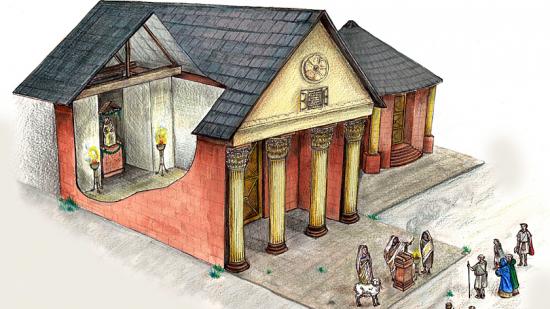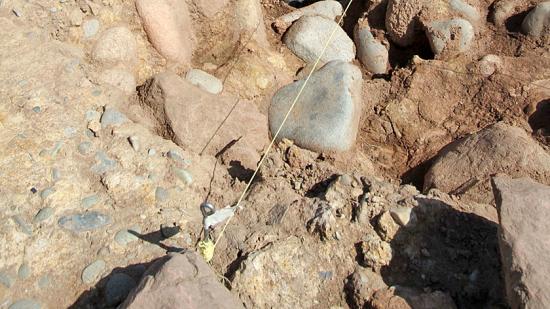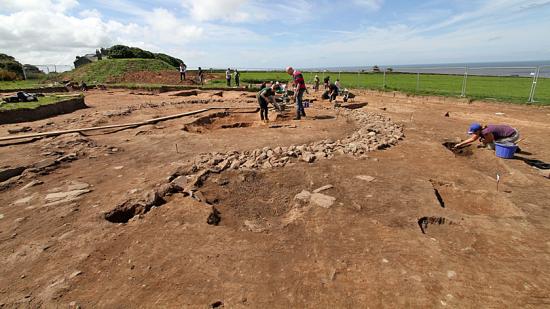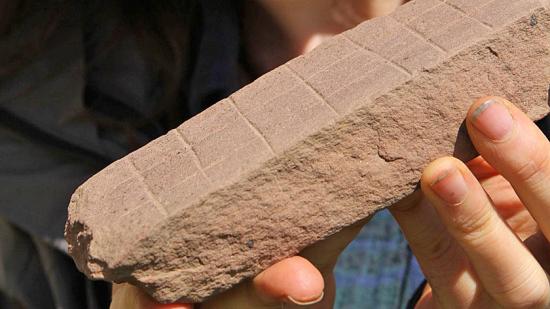Ben Miller
Source - http://www.culture24.org.uk/history-and-heritage/archaeology/art492568-Altars-dedicated-Roman-Jupiter-classical-temples-intrigue-Maryport-archaeologists
Altars and godly dedications are keeping archaeologists digging along the frontier of the Roman Empire World Heritage Site in Cumbria

Last year the team re-excavated a rectangular classical temple
Altars dedicated to gods, one of the oldest temples of its era ever discovered, a mystery monument and the disparities between domestic and ritual habits in Roman times will be foremost in the minds of archaeologists in Cumbria between now and next summer, with a fourth season of work next to the Senhouse Roman Museum – the scene of a largely unexplored Roman fort and settlement – yielding an intriguing range of fresh discoveries.
Experts and enthusiasts have spent six weeks on the Maryport Roman Temples project. Buoyed by the excavation of a rectangular classical temple last year, the team returned to the area it was found in, uncovering a large stone circular structure, evidence for an open gathering area and the foundations for a large monument.

The monument foundations
“The rectangular temple is the most north-westerly classical temple in the Roman world to be discovered so far and dates from the 2nd century,” said Professor Ian Haynes, of Newcastle University, who led the dig.
“Both this and the circular structure were originally located by local bank manager and amateur archaeologist Joseph Robinson.

Digging around the temples
“Photographs and other documents from the 1880s indicate that only part of this area was excavated and much remains to be discovered.
“From this year’s excavation we have evidence for an open area in front of the classical temple and the foundations of a substantial monument, which probably supported a free-standing column.
“A further important discovery was the location of an entrance to the circular structure, indicating that it shared the same alignment as the rectangular temple.
“The finds also show this area, which is to the east of the settlement and north east of the fort, was used in a different way to the main settlement area.
“The contrast with domestic areas is pronounced and reflects the ritual character of this area.”
Maryport has perhaps become best-known for a set of 23 Roman altars, the most recent of which was discovered in 2012.
“We would still like to find out more about exactly where and how the altars found in the 1870s further east of this site were originally displayed here, when they were dedicated to the Roman god Jupiter each year by commanders of the fort,” says Haynes.
“We have established that when they were ‘buried’ they were actually being reused in the foundations for a large timber building in the 4th century.
"But where were they before then? We’re aiming to find more information on this when we return to work here next summer.”
The inscriptions on each altar often chart the careers of fort commanders during their moves between posts across the empire.
“Maryport was an important part of the coastal defences of Rome’s north-west frontier for over 300 years,” says Nigel Mills, the heritage advisor to the Hadrian’s Wall Trust.
“These sites are part of the frontiers of the Roman Empire World Heritage Site, along with Hadrian’s Wall itself.
“Roman citizens from across the Empire came here to make a living supplying soldiers in the fort and elsewhere across the frontier.
“The temple is evidence of close connections across the empire. Roman citizens would have felt at home here.”

A piece of a gaming board found at Roman Maryport